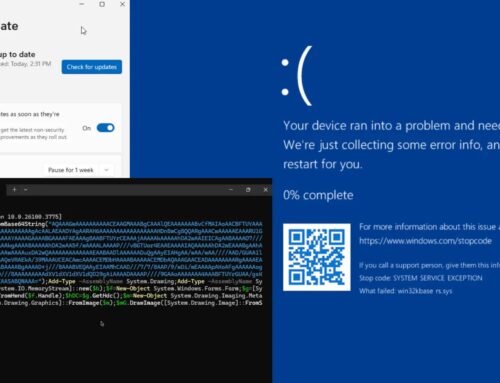
Hackers Using AI to Automate Vulnerability Discovery and Malware Generation – Microsoft Report
The AI Arms Race: How Automated Vulnerability Discovery is Reshaping Cyber Threats
The cybersecurity landscape has reached a critical juncture. For years, cybercriminals have sought efficiency, but a recent Microsoft report highlights a transformative shift: hackers are leveraging Artificial Intelligence (AI) to automate vulnerability discovery and malware generation. This isn’t just about faster attacks; it signifies a fundamental change in how threats emerge and evolve, demanding an immediate re-evaluation of our defensive strategies.
Microsoft Report Unveils AI-Driven Cyber Offensives
Recent intelligence from Microsoft reveals a disturbing trend: adversaries are no longer manually sifting through code for weaknesses or laboriously crafting each piece of malware. Instead, they’ve integrated machine-driven workflows into their operations. This allows both opportunistic attackers and well-funded state-sponsored groups to identify zero-day vulnerabilities and assemble sophisticated malware with unprecedented speed and scale. The traditional cat-and-mouse game is accelerating, with AI providing a significant advantage to the offensive side.
The Mechanics of AI-Powered Vulnerability Discovery
How exactly are these AI systems aiding threat actors? The process often involves sophisticated techniques:
- Automated Code Analysis: AI algorithms can rapidly scan vast amounts of source code for common weaknesses, subtle logic flaws, and potential exploit chains that might evade human review. This includes identifying vulnerabilities in open-source libraries and proprietary applications.
- Fuzzing and Exploit Generation: Machine learning models can generate intelligent test cases (fuzzing) to probe software for unexpected behavior, leading to crashes or exploitable conditions. Once a vulnerability is identified, AI can assist in developing proof-of-concept exploits.
- Pattern Recognition: AI excels at recognizing patterns. In cybersecurity, this translates to identifying recurring vulnerabilities across different software versions or platforms, allowing attackers to scale their efforts. For example, an AI might quickly spot a pattern similar to CVE-2023-34039, a VMware vCenter Server vulnerability, across various virtualized environments.
AI-Enhanced Malware Generation: A New Era of Evasion
Beyond vulnerability discovery, AI is also being weaponized for malware development:
- Polymorphic and Metamorphic Malware: AI can dynamically alter malware code to evade traditional signature-based detection systems. This creates highly evasive threats that constantly change their appearance, making them harder to identify and block.
- Malware-as-a-Service (MaaS) Enhancements: AI tools can be integrated into MaaS platforms, allowing less technically skilled individuals to generate custom, sophisticated malware strains tailored for specific targets.
- Social Engineering Automation: While not strictly malware generation, AI-powered natural language processing (NLP) can craft highly convincing spear-phishing emails and messages, increasing the success rate of initial compromise.
Remediation Actions: Defending Against AI-Driven Threats
The rise of AI in cyber attacks necessitates a proactive and adaptive defense strategy. Organizations must consider:
- Enhancing Software Supply Chain Security: Scrutinize all third-party components and open-source libraries. Implement robust software composition analysis (SCA) to detect known vulnerabilities early.
- Investing in AI-Powered Security Solutions: Leverage AI and machine learning in your own defenses. Endpoint Detection and Response (EDR), Security Information and Event Management (SIEM), and Network Detection and Response (NDR) tools powered by AI can detect anomalous behavior indicative of AI-generated threats.
- Regular Patch Management and Vulnerability Assessments: Maintain a strict patching regimen and conduct frequent vulnerability scans and penetration tests. Proactive identification and remediation of weaknesses are paramount.
- Adopting a Zero Trust Architecture: Assume no user or device is inherently trustworthy. Implement strict identity verification, least privilege access, and micro-segmentation to limit lateral movement if a breach occurs.
- Developer Training on Secure Coding Practices: Educate developers on common vulnerability patterns and secure coding principles to reduce the attack surface.
- Threat Intelligence Integration: Stay abreast of emerging AI-driven threats and attacker tactics. Integrate real-time threat intelligence into your security operations.
The Path Forward: Adapting to an Automated Threat Landscape
The integration of AI into the cyber attack lifecycle marks a significant escalation in the digital arms race. It underscores the critical need for organizations to move beyond reactive security measures and embrace a more predictive, intelligence-driven approach. By understanding the capabilities of AI-powered attackers and proactively strengthening our defenses with advanced technologies and robust security practices, we can endeavor to stay ahead in this evolving threat landscape.





